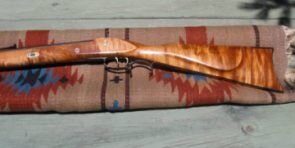Staff Member
Bronze Supporter
- Messages
- 4,217
- Reactions
- 5,051
- Thread Starter
- #61
I'm not sure what setup you're referring to, however i will state that BLO wasn't used when this rifle was made, it was raw.
Follow along with the video below to see how to install our site as a web app on your home screen.
Note: This feature may not be available in some browsers.
I dont have experience except for a few tools I made with wood handles and my yard tools. But I just keep applying thin coats and eventually they do darken up. I follow this guy and his old friend who does some amazing work. Maybe you can pick something up from his video
So, i left it a couple of days, having laid it out in the sun for several hours with a thick layer of linseed oil on the lighter portions.
Last night i used a 3M finishing pad to take off the thick residue left over from the dried oil. My intention was to thinly, hand apply more linseed tonight, after tack clothing it, but i forgot.....
So here are some pics of where it's up to, it's not bad, but other than getting a slightly shinier finish, it's not going to change too much i'm afraid.
View attachment 309953 View attachment 309954
View attachment 309955 View attachment 309956
View attachment 309957
View attachment 309958
View attachment 309959

Gentlemen. I have been professionally gunsmithing for about ten years. I tinkered with guns around old men for years before that.
The conclusion that I've come to is that there are as many "ways to go" as there are gunsmiths. I've never been a fan of linspeed. I've always used Velvet Oil. Duane Weibe makes some of the best looking rifles I've seen and he swears by a seafin teak oil mix. Some milsurp rifle restorers I've talked to have sung the praises of raw linseed oil, as it does age to a nice reddish color. For my own stuff, I generally clean up milsurp stocks with tung oil and then use a gunny's paste on them.
People are always quick to get online to say you should have or should be doing it this way or that. When someone has done good work, seems we ought to just compliment them on their work. Then say, if you ever have another project, this has always worked really well for me.
Anyone who talks in absolutes in gunsmithing is wrong. There are very few if any.